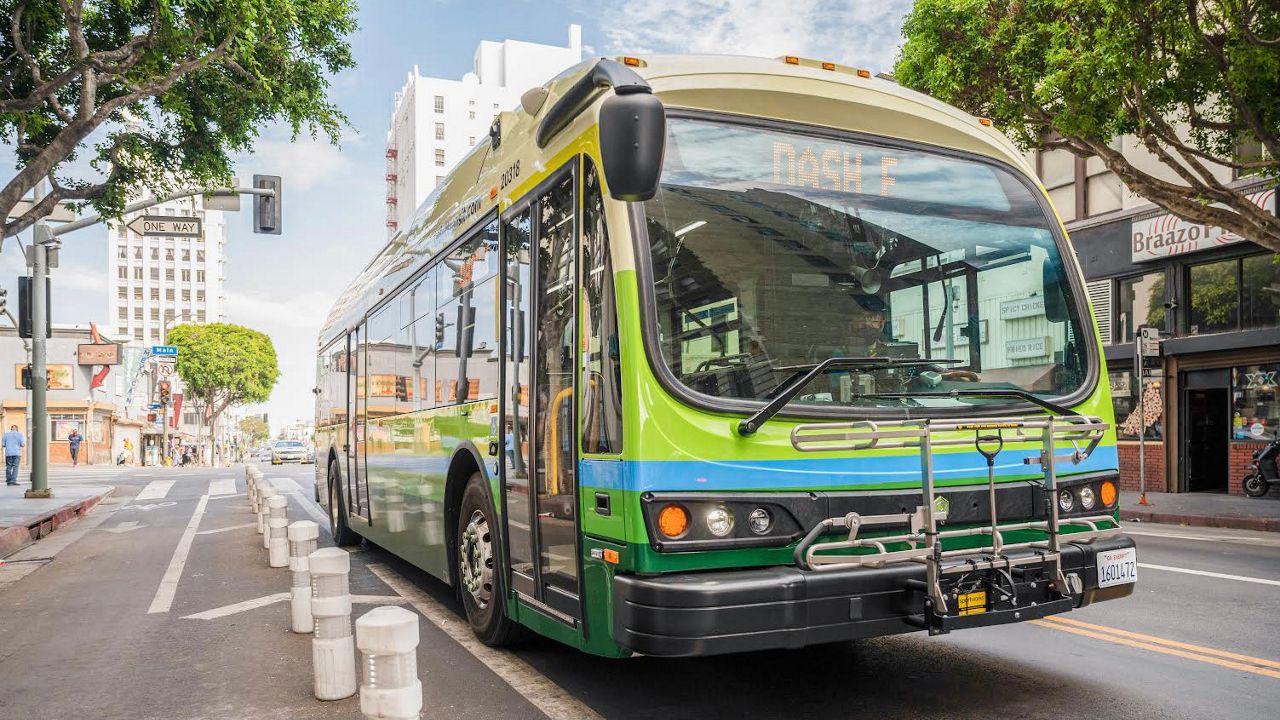LOS ANGELES — When it comes to transportation, Los Angeles is letting down its women. That’s the upshot of a new study from the LA Department of Transportation, which found that Black, Indigenous and other people of color face racial barriers to safe and accessible transportation.
“While higher-income women can often leverage their resources to overcome gendered travel challenges, lower-income women are left dependent on systems that do not account for their needs,” the study found.
In the works since 2019, the Changing Lanes study, released Friday, focused on three neighborhoods with high proportions of people of color and women who live in households without a car: Sun Valley in the San Fernando Valley, Watts in Central City and Sawtelle on the West side.
Using a research approach that included surveys and interviews about travel patterns conducted in partnership with local community groups, the study found that women faced more barriers to travel than men. Women not only make up a smaller percentage of driver’s license holders compared with men, but they also have less access to smartphones and computers, the study found.
Women also feel less safe when using public transit, with women who identified as LatinX, Black or Asian more likely than white women to report feeling unsafe.
In addition, the study found that women were more likely than men to use multiple types of transportation in a day, with men more likely to use so-called active transportation, including bicycles, skateboards and scooters.
The city’s first effort to identify barriers and strategies to improve access to public transportation for women, the Changing Lanes study was designed to better understand the experiences and needs of women using LA’s transit system with the goal of helping the city prioritize equity in its transportation planning and design.
The study makes several recommendations for improving infrastructure to increase women’s mobility. In neighborhoods that are less dense, it recommends expanding access to transportation modes better suited to long-distance travel, such as cars and public transit, while in more dense areas, it suggests increasing access to walking, bicycling and other forms of active transit.
Recognizing that the LADOT alone can not make all of the necessary changes to improve women’s access to transportation, it plans to partner with community-based organizations to improve women’s access to driver's licenses and vehicles that enable longer trips, and with the Department of City Planning and other agencies that set policy for land use.
In addition to gender inequities, the study found that women of color live in historically under-invested areas characterized by racist housing and zoning practices that have led to economic disenfranchisement.
LADOT says it would like to see healthy grocery stores, libraries, clinics, childcare and other essential services in closer proximity to the places where women live, ideally within a 15-minute trip.
To help women get there, LADOT recommends service improvements, including van and car-sharing programs, as well as a new weekend, point-to-point transit service for female caregivers in low income neighborhoods that could connect them to beaches and other recreational areas.
While LADOT would like to transition the city away from its entrenched dependence on cars and toward public and active transportation, the study acknowledges that is a long-term goal that is still decades away. For low-income women and their families, cars remain vital for their ability to provide reliable, flexible and longer-distance trips, especially in parts of the city that lack adequate public transportation.
“While reducing personal car use is an important objective with significant environmental benefits, it is not without potential pitfalls,” the study said. “If carried out hastily, such a transition risks inadvertently harming vulnerable communities. LADOT must take a measured approach to the question of automobile access, balancing the immediate needs of low-income women and their families with aspirations for universal, equitable public transportation.”
LADOT’s Changing Lanes report follows up on a 2019 study from the Los Angeles County Metropolitan Transportation Authority called Understanding How Women Travel, which found that more than half of Metro’s bus and rail riders were women and that they experienced more costs, stress and safety risks than men.
The Changing Lanes study is being released when women hold the leadership positions at both of LA’s main transit agencies for the first time. LA County Supervisor Hilda Solis took over as Metro’s board chair this month, and Stephanie Wiggins became the agency’s first female CEO in June. Seleta Reynolds is general manager of LADOT.



